
Decades of naval design and ingenuity culminate in the modern marvels that are aircraft carriers, floating fortresses defying the odds of physics with their colossal size and asymmetrical structures.

A question often arises, one that stirs curiosity even in the minds of seasoned sailors and military tech aficionados: How do these behemoths, like the USS Gerald R. Ford, manage to stay afloat without tipping over?
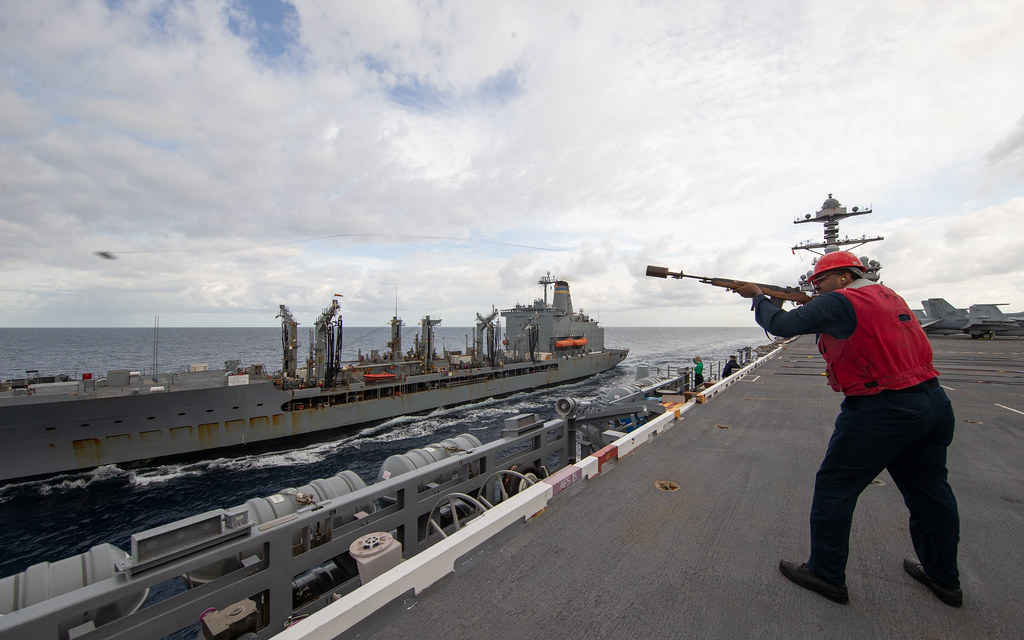
The illusion of instability stems from the visual observations of these carriers; their hulls sharply curve, tapering into what appears as a knifelike edge, evoking images of a vessel precariously close to capsizing.

Indeed, one might look at these ships and wonder how such a top-heavy giant does not succumb to the relentless whims of the ocean.

The answers lie beneath the surface and in the principles of physics that have been applied with meticulous precision to their architecture.
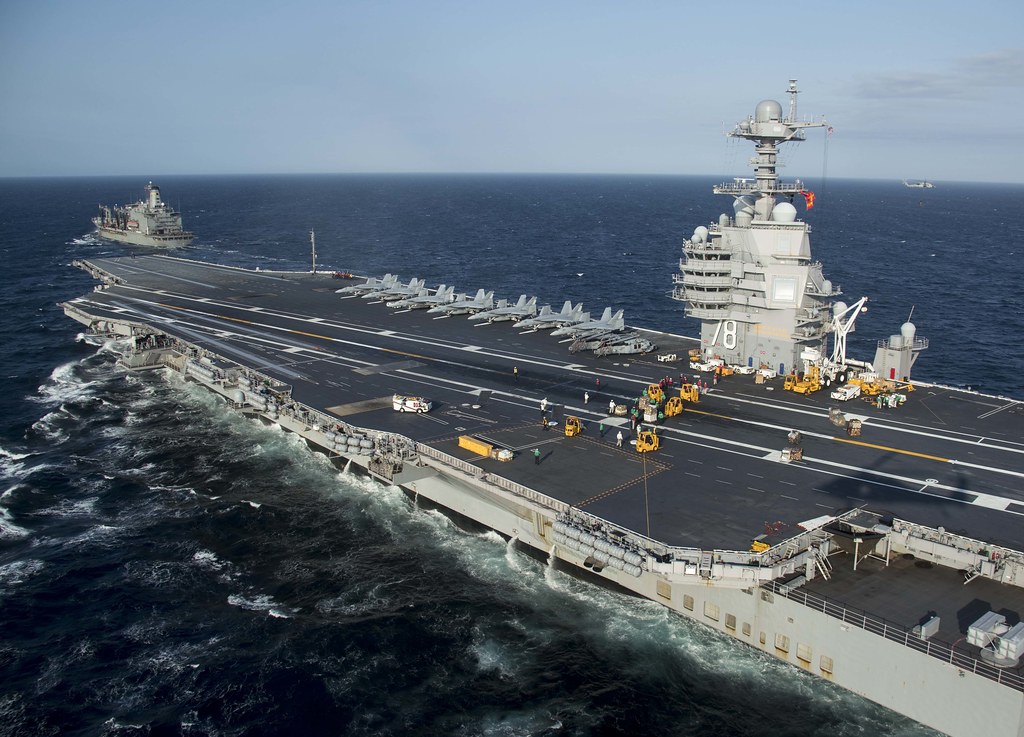
The USS Gerald R. Ford, for instance, reveals the culmination of naval design evolution—a ship that, despite its towering superstructure and formidable length, exhibits an exceptional level of stability.

The principle that keeps these floating airfields from tipping is the strategic placement of the center of buoyancy above the center of gravity.

This innovative design ensures that the ship’s balance point, or center of gravity, remains lower than the point where buoyant force is concentrated. As the ship tilts, the center of gravity must climb higher against the force of gravity, requiring an increasing amount of energy to tip further, thus making the ship naturally right itself.
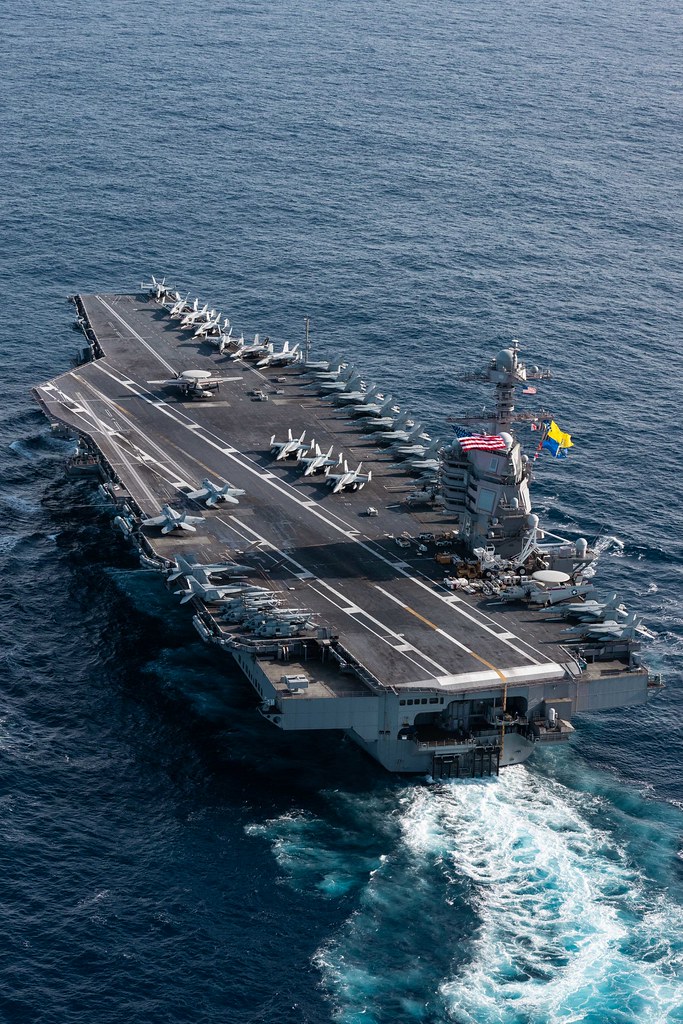
While at first glance, the hull design of an aircraft carrier might suggest a narrow and unstable structure, the reality is quite the opposite.
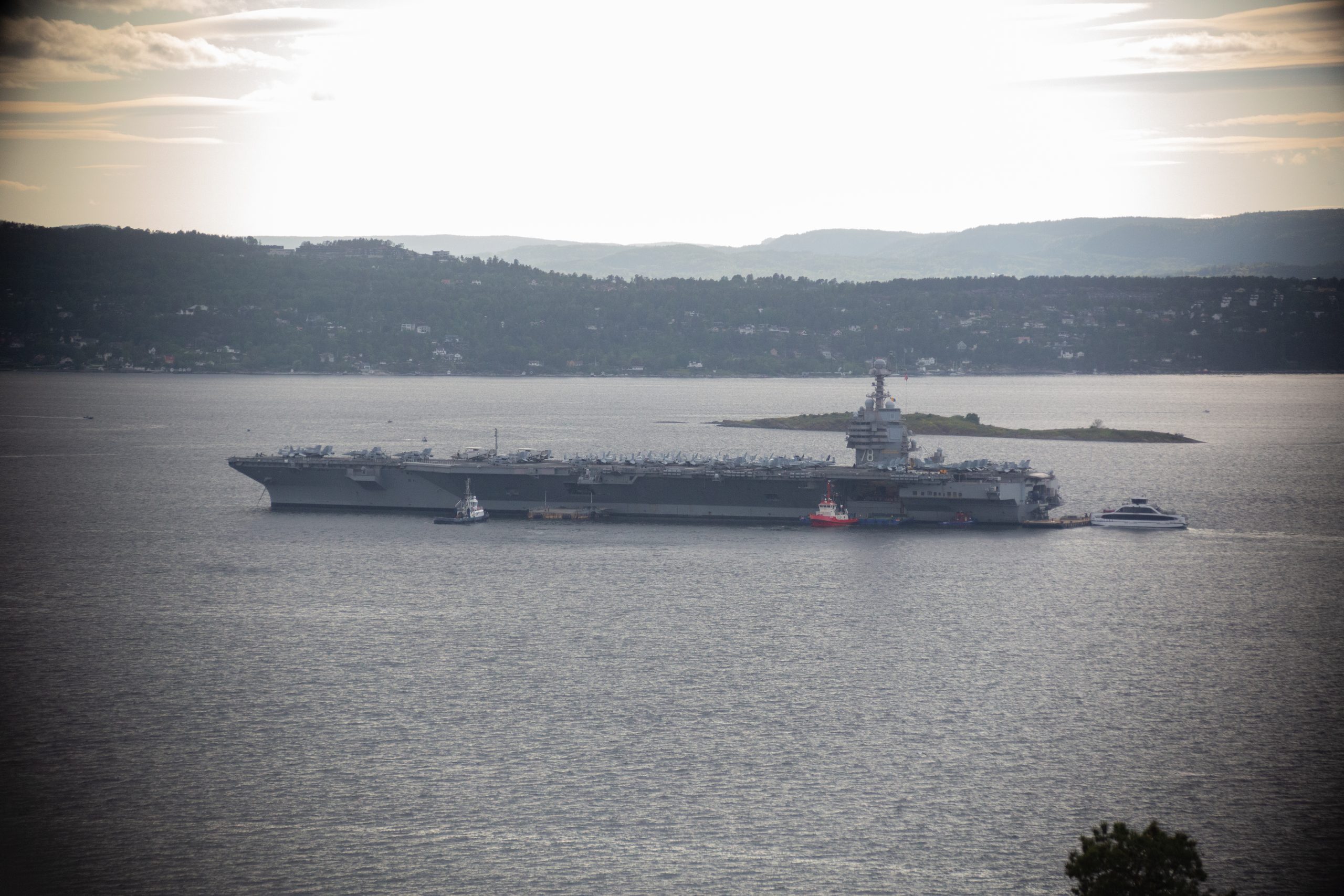
Below the waterline lies a wide, flat base—unseen from above—that minimizes drag and provides a stable foundation. It is a design that challenges initial perceptions, yet it is grounded in practicality and has been refined over centuries.

Notably, the “island” superstructure that characterizes aircraft carriers, while a commanding presence on the starboard side, is not merely an architectural afterthought. Its placement is deliberate, offsetting the natural yaw induced by aircraft propellers, enhancing the safety of operations, and contributing to the overall balance of the ship.
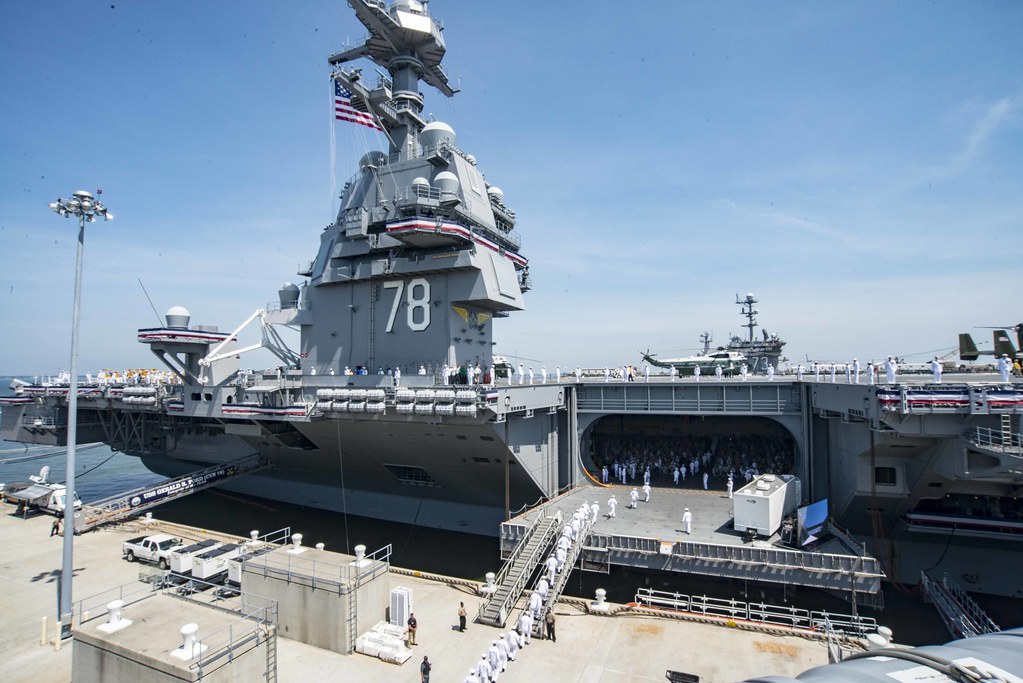
These engineering feats are complemented by bulbous bows, a concept that, though seemingly counterintuitive, plays a crucial role in reducing hydrodynamic drag.
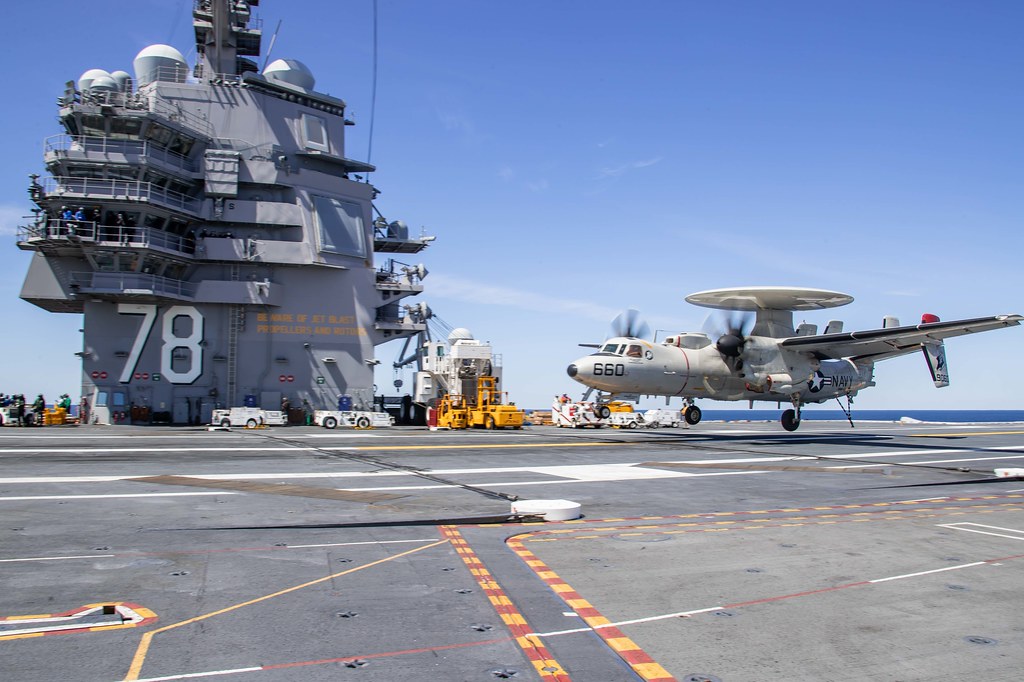
Pioneered by ship designers in the early 20th century, this bulbous protrusion at the bow generates a wave pattern that cancels out drag-inducing waves created by the ship’s movement, streamlining the ship’s passage through water and further augmenting stability.
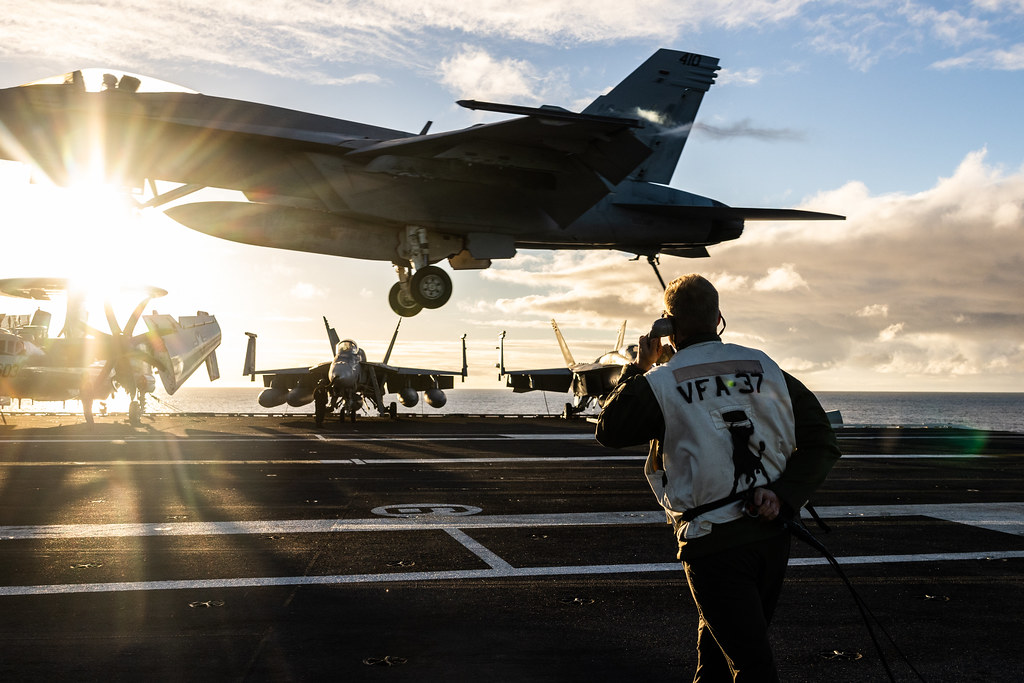
This incredible combination of advanced naval architecture and physics defies the initial skepticism about the stability of aircraft carriers. Each carrier is a testament to human ingenuity and a demonstration of how principles of buoyancy, center of gravity, and hydrodynamics coalesce into a stable and formidable naval platform.

Despite their imposing dimensions and seemingly precarious designs, aircraft carriers remain among the most stable ships in the fleet, ready to face the challenges of the sea without fear of turning turtle—until, perhaps, the guns of conflict demand otherwise.
Relevant articles:
– Question: Can a Navy Aircraft Carrier Tip Over at Sea?, The National Interest
– Why Don’t Aircraft Carriers Tip Over?, Popular Mechanics
